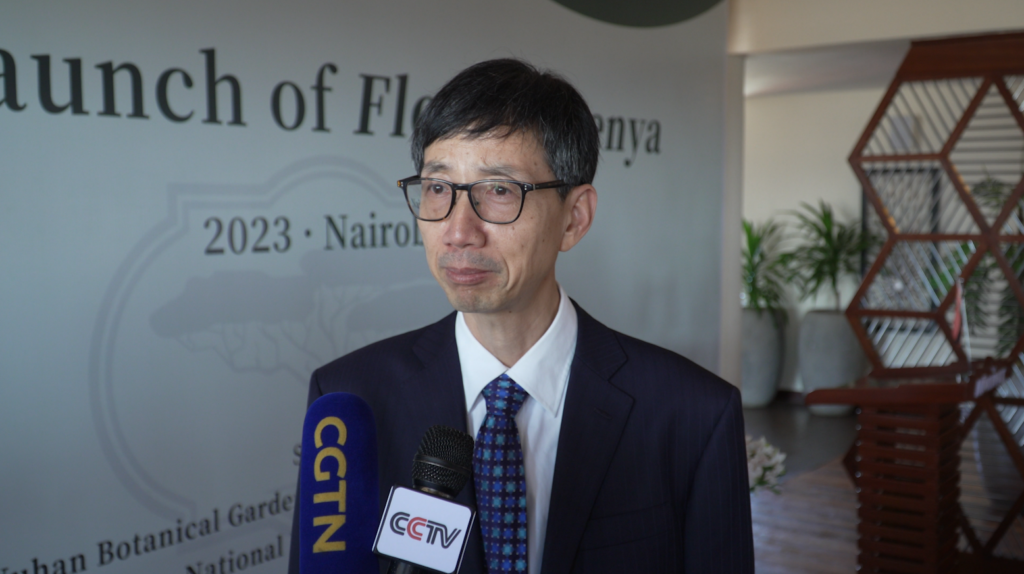Kenyan, Chinese scientists publish book documenting Kenya’s plant species
Kenya’s capital, Nairobi, hosted on September 25 the launch ceremony of a book detailing Kenya’s botanical gifts.
The Flora of Kenya is the result of extensive cooperation between Chinese and Kenyan scientists, and it is Kenya’s first publication on national flora, filling the gap in the field of plant resources research in the country.
The book is part of a 31-volume series jointly published by Hubei Science and Technology Press and The East African Natural Society. Some of the people who attended the launch ceremony include the Chairman of the Hubei Changjiang Publishing and Media Group Huang Guobin, the Director of the Wuhan Botanical Garden of the Chinese Academy of Sciences Wang Qingfeng, the Director General of the National Museums of Kenya Prof Mary Gikungu, and the managing Director of CGTN Africa Ms Song Jianing, among others.

Speakers at the event praised the publication, most of them expressing confidence that it would go a long way in helping Kenyan plant scientists better understand the field, which would in turn boost conservation efforts.
Huang Guobin hailed the cooperation between Chinese and African experts and organizations, which have birthed beneficial projects.

He also affirmed the importance of collaboration in the field of plant protection, saying the ripple effects would be felt across multiple other sectors.
“This project is not only beneficial to plant protection and natural resource management research in Kenya, it also benefits environmental protection and utilization of natural resources in East Africa and all African countries,” Huang said.
On his part, Wang Qingfeng said the book offered crucial documentation of Kenya’s plants, which would help in the protection of the country’s botanical givings.

“The first book of the Flora of Kenya – Rubiaceae captures all the species in Kenya – about 265 species and some more subspecies and varieties – so more than 320 in total,” said Wang.
“The new book has some very important information, including colored pictures capturing the representatives of each genus. I think that is very important not just for scientists but also for the public to let them know what we have now in Kenya, and also how to grow them and how to use them in the future,” he added.
Wang also acknowledged the significance of such studies and publications to the global conservation efforts, noting that the future of plants depends a lot on understanding the species available and the changing patterns of flora.
He affirmed that the new book can play a part in the global efforts to achieve the Sustainable Development Goal 15 to protect, restore and promote sustainable use of terrestrial ecosystems, sustainably manage forests, combat desertification, and halt and reverse land degradation and halt biodiversity loss.
Prof Gikungu , speaking after the launch ceremony, affirmed the book’s significance to Kenya’s conservation efforts.

She said the collaborative publication would add positively onto the current governmental and non-governmental activities towards plant protection.
“This particular book talks about our own species that are poorly known by many learners. It is going to promote education, a lot of research as well as conservation,” she said.
She further hailed the collaboration between Chinese and Kenyan experts in research, mapping out, studies and the publication of the book.
“The collaboration between the Kenyan scientists and the Chinese scientists has been very significant in terms of enhancing biodiversity conservation in Kenya and also enhancing capacity building. The Chinese government has been very supportive in providing capital for the inventories that have been done in the country and also equipping the learners with new knowledge,” said Prof Gikungu.






